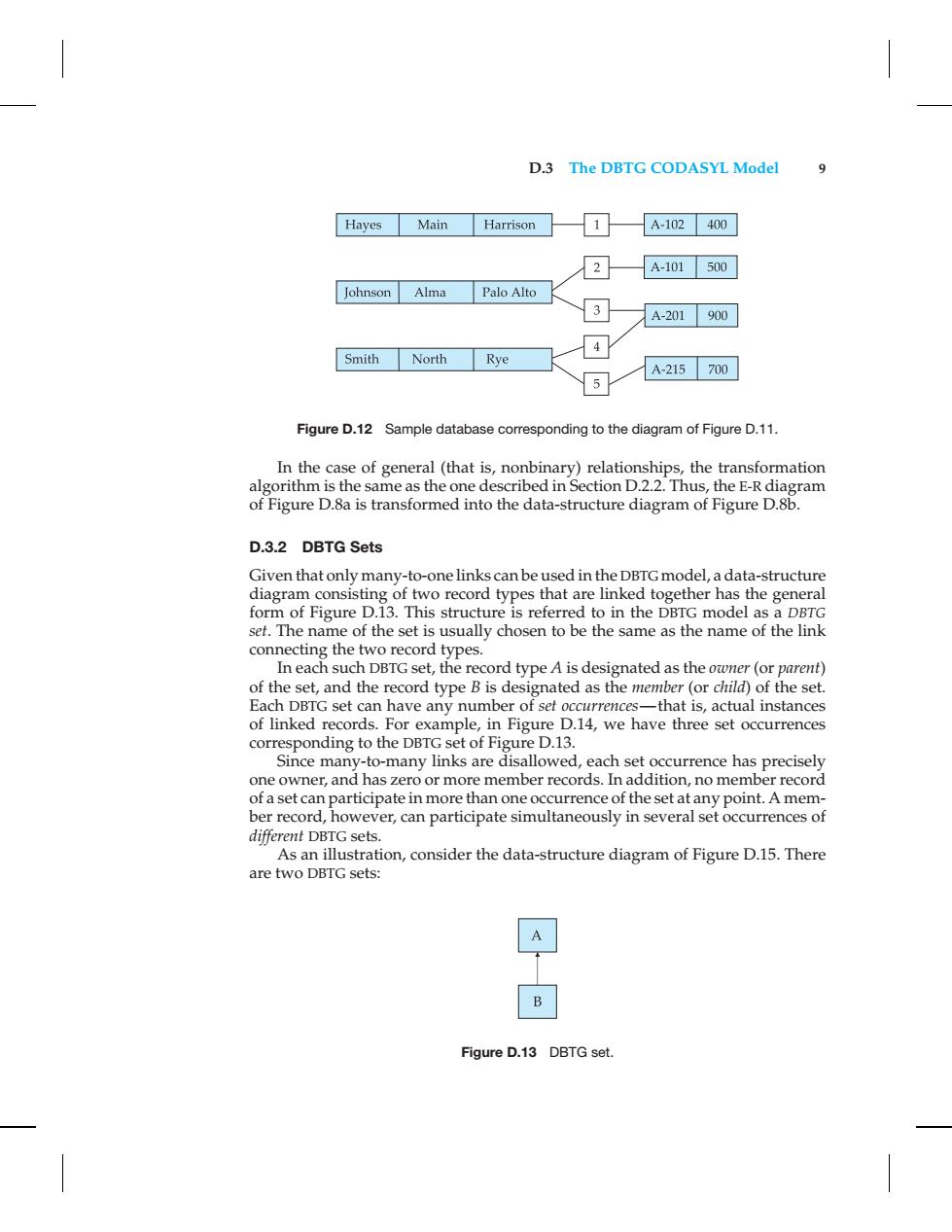正在加载图片...

D.3 The DBTG CODASYL Model 9 Hayes Main Harrison A-102400 2 A-101 500 Johnson Alma Palo Alto 3 A-201 900 Smith North Rye A-215 700 5 Figure D.12 Sample database corresponding to the diagram of Figure D.11. In the case of general(that is,nonbinary)relationships,the transformation algorithm is the same as the one described in Section D.2.2.Thus,the E-R diagram of Figure D.8a is transformed into the data-structure diagram of Figure D.8b. D.3.2 DBTG Sets Given that only many-to-one links can be used in the DBTG model,a data-structure diagram consisting of two record types that are linked together has the general form of Figure D.13.This structure is referred to in the DBTG model as a DBTG set.The name of the set is usually chosen to be the same as the name of the link connecting the two record types. In each such DBTG set,the record type A is designated as the owner (or parent) of the set,and the record type B is designated as the member(or child)of the set. Each DBTG set can have any number of set occurrences-that is,actual instances of linked records.For example,in Figure D.14,we have three set occurrences corresponding to the DBTG set of Figure D.13. Since many-to-many links are disallowed,each set occurrence has precisely one owner,and has zero or more member records.In addition,no member record of a set can participate in more than one occurrence of the set at any point.A mem- ber record,however,can participate simultaneously in several set occurrences of different DBTG sets. As an illustration,consider the data-structure diagram of Figure D.15.There are two DBTG sets: A 、B Figure D.13 DBTG set.D.3 The DBTG CODASYL Model 9 Figure D.12 Sample database corresponding to the diagram of Figure D.11. In the case of general (that is, nonbinary) relationships, the transformation algorithm is the same as the one described in Section D.2.2. Thus, the E-R diagram of Figure D.8a is transformed into the data-structure diagram of Figure D.8b. D.3.2 DBTG Sets Given that only many-to-one links can be used in the DBTGmodel, a data-structure diagram consisting of two record types that are linked together has the general form of Figure D.13. This structure is referred to in the DBTG model as a DBTG set. The name of the set is usually chosen to be the same as the name of the link connecting the two record types. In each such DBTG set, the record type A is designated as the owner (or parent) of the set, and the record type B is designated as the member (or child) of the set. Each DBTG set can have any number of set occurrences— that is, actual instances of linked records. For example, in Figure D.14, we have three set occurrences corresponding to the DBTG set of Figure D.13. Since many-to-many links are disallowed, each set occurrence has precisely one owner, and has zero or more member records. In addition, no member record of a set can participate in more than one occurrence of the set at any point. A member record, however, can participate simultaneously in several set occurrences of different DBTG sets. As an illustration, consider the data-structure diagram of Figure D.15. There are two DBTG sets: Figure D.13 DBTG set